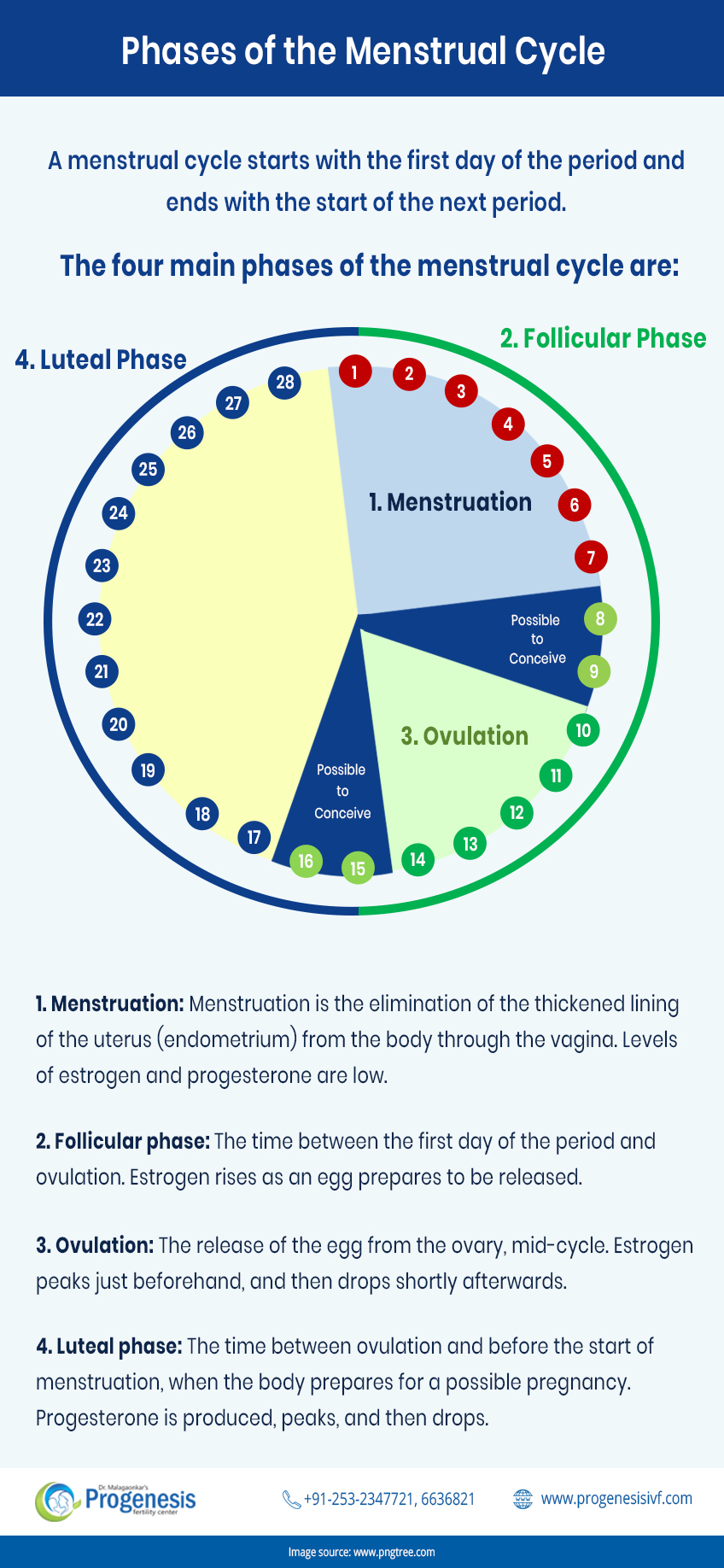Menstruation is the periodic vaginal discharge of endometrial tissues and blood that are shed from the lining of a woman’s uterus. Also denoted as a periods, menstruation is part of the menstrual cycle which prepares a woman’s body for fertility every month. It is a significant indicator of reproductive and general female infertility health, while other health issues may limit this capacity.
The menstrual cycle can be divided into the stages of follicular phase (14 days during which proliferative phase occurs), ovulation, luteal phase (14 days during with secretory phase occurs), and menstruation.
Phases of menstrual cycle:
Menstruation:
If the ovum does not implant, the corpus luteum degenerates and the progesterone levels decrease resulting in the sloughing off of the endometrium lining (Menstruation).
Follicular Phase:
During the follicular phase, release of FSH (follicle stimulating hormone) from the pituitary results in the development of a primary ovarian follicle. This primary ovarian follicle produces estrogen which causes the uterine lining to proliferate (proliferative phase).
Ovulation:
During the middle of the menstrual cycle (14 days), an increase in LH (LH spike) results because of the estrogen produced during the proliferative phase. This LH spike causes ovulation (release of ovum from the follicle) to occur.
Luteal Phase:
Ovulation is followed by the luteal phase, during with the remnants of the follicle (left behind after ovulation of the ovum) develop into the corpus luteum.
During this stage, the endometrium solidifies more and the uterine glands initiate to produce their secretions of life-supporting substances for the nurture of a fertilized egg. If the egg becomes fertilized by sperm and then attach itself to the uterine lining, the corpus luteum secretion now becomes controlled by a different hormone, (HCG), manufactured by the placenta. If the egg is not inseminated, the secretions of the corpus luteum are still precise by LH.

What are the 4 phases of menstrual cycle?
Menstrual cycle is more than just getting periods. It is a complex process based on events either in the ovary (ovarian cycle) or uterus (uterine cycle). The ovarian cycle consists of stages like follicular phase, ovulation, and the luteal phase. Whereas, the uterine cycle consists of a menstrual stage.
What is a menstrual phase?
The first stage of the menstrual cycle is the menstrual phase which generally stays up to 1-5 days. The phase starts when the egg from the previous cycle is left unfertilized.
What is the mid-cycle phase?
Mid-cycle phase is typically your phase of ovulation. When a fresh egg is released from the ovaries. Usually the 14th or 16th day after your periods.
What is the follicular phase of menstrual cycle?
The follicular phase is basically the first half of your menstrual cycle that begins from the day one of your periods. During this phase your follicles (the sacs between your ovaries that contain eggs) begin to mature and prepare themselves for the release of new mature eggs.
What is the luteal phase of menstrual cycle?
This phase starts after your ovulation and continues till the start of your next period. It is basically the second phase of your menstrual cycle that prepares your uterus for pregnancy by thickening its walls.
